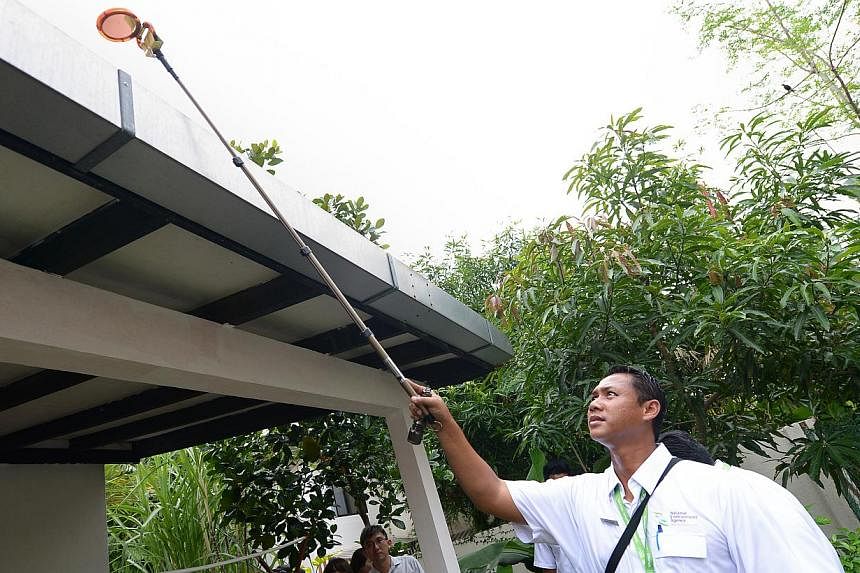Dengue continues to rage, with 675 cases last week. So far, close to 9,000 people have been infected this year.
But more scary is the sharp rise in infections. There were 122 more cases last week than in the previous week. Calling it a "significant increase", the National Environment Agency (NEA) warned that numbers can be expected to continue rising.
This is because "the warmer weather over the next two to three months shortens the breeding and maturation cycles of the Aedes mosquitoes as well as shortens the incubation period of the dengue virus", the NEA said on the dengue website.
It added that the best way to stop the epidemic is to prevent mosquitoes from breeding, which they can do in just a spoonful of stagnant water.
Between Sunday and 3pm yesterday, another 265 people were diagnosed with dengue.
Last year, in the worst dengue epidemic seen here, 22,170 people were infected and seven died. There has already been one death this year.
Almost one in five people infected ends up in hospital, according to the Ministry of Health (MOH), but they occupy less than 1 per cent of public hospital beds on any one day.
The bulk of the current cases is clustered around the Serangoon-Hougang housing estates.
The western part of Singapore remains relatively safe from dengue, although there are a few isolated clusters.
The majority of the 72 clusters are in the central and eastern parts of the country - traditionally the worst-hit areas for dengue.
The most active is the cluster of 137 infections around Kovan and Lowland roads off Serangoon Road. There were 28 new cases there last week.
The NEA said it found 30 breeding habitats in homes, one in public space and six at construction sites, including a water tank with 999 larvae. Larvae were also found in discarded pots, drains and hardened soil.

